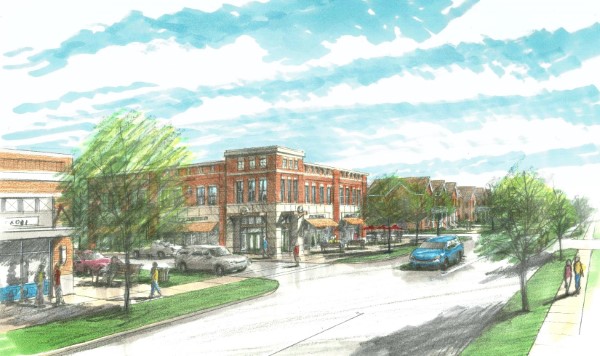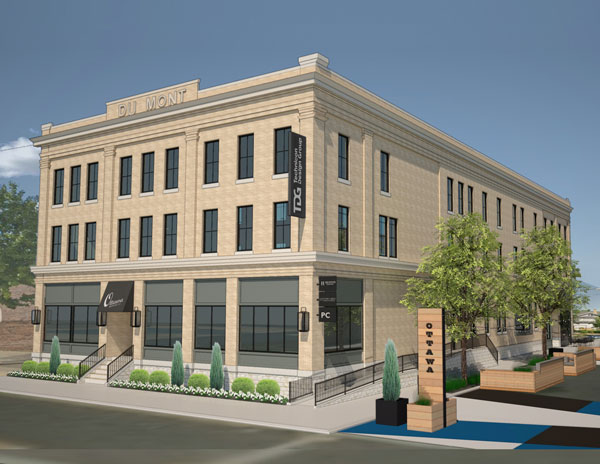Ohio is on the rise, both in terms of population and quality of life offerings.
According to Site Selection’s 2023 Governor’s Cup Rankings, 16 Ohio cities scored a spot in the Top 100 Micropolitan areas. Of those, 10 micros fall within the Top 20 based on securing 115 new or expansion project investments. A majority of these investments are a result of businesses deciding to expand in these small towns, taking advantage of the best these regions have to offer employees and their families.
“It’s not just about finding the perfect site for your business,” JobsOhio President and CEO J.P. Nauseef says of the rankings. “It’s about discovering a place, a community and a lifestyle that feels like coming home in every possible way.”
Over the past decade, the U.S. Census Bureau estimates that the state has drawn in over 223,000 residents. The results of these movements have spurred growth in many of the state’s leading micropolitan areas like Findlay (No. 1), Sidney (T4), Greensville (T7), Defiance (T10) and Wooster (T10). This small-town rise can be attributed not only to the availability and feasibility of housing but also to the quality of life these areas afford to people of all ages.
A 2024 Housing Affordability study conducted by consumer financial services Bankrate shows that Americans now looking to purchase a median-priced home ($400,000 and up) in the U.S. must make at least $110,000 per year. That’s about a 50% increase in less than four years. As most states like California, Massachusetts, Tennessee and Illinois face continuous increases to that average, Ohio is one state where your dollar can stretch further. The report details that to afford a typical home in Ohio, one needs to make an annual income of $64,000.

Plans for North Main Street and Twain Avenue in Urbana, Ohio, include new commercial development and a focus on walkability.
Illustration courtesy of Burton Planning Services
With room to breathe, residents find Ohio’s quality of life reflects a one-stop-shop for everyday entertainment. The arrival of each season brings a hearty mix of outdoor activities without the fear of natural disasters, regardless of where your Ohio roots are planted. The same locations in which one can ski or try their luck at ice fishing offer the luxury of hiking and swimming just months later.
Beyond the natural draw of Ohio’s great outdoors, state and local leadership have plans in place to enrich the offerings of its communities and showcase exactly why Ohio is the ideal location to work, live and play.
New Era
Many parts of the state are undergoing revitalization projects that aim to bring new life to aging infrastructure within various downtown districts.
The Vibrant Communities Program, available through JobsOhio, offers resources to the state’s small and medium-sized communities to make life before, during or after a workday a fulfilling one. Strategic investments focus on redevelopment within communities around the state, affording a new purpose to vacant spaces and a refreshing for residents to enjoy home.
After a year of construction and a $1.1 million investment, the city of Zanesville has opened doors to the highly anticipated Downtown Exchange. Located 52 miles east of Columbus, Ohio, the city’s 24,600 residents are seeing their downtown in an exciting new light.
The new mixed-use marketplace development is housed in the former Black-Elliot Block commercial building, built in 1876 by local businessmen Henry Elliot and Peter Black. The revitalization of the 20,000-sq.-ft. building located in the heart of downtown is set to draw the community together unlike ever before, made possible by community members and local partnerships.
It doesn’t matter what day of the week it is; this space serves as a gathering point to accomplish any individual’s needs. Hungry? The first floor of The Downtown Exchange has been transformed into a food hall fit for 10-12 vendors, currently offering everything from coffee and desserts to hibachi and burgers. Business to tend to? The second and third level of the building have transformed into coworking space, private offices and conference rooms.
“The Downtown Exchange (Zanesville, Ohio) is a perfect example of a transformational Vibrant Communities project.”
— Katy Farber, Ohio Southeast Economic Development Vice President
“The Downtown Exchange is a perfect example of a transformational Vibrant Communities project,” said Ohio Southeast Economic Development Vice President Katy Farber. “It blends the community’s redevelopment plan with local investment to bring much-needed services and capacity to the downtown. The JobsOhio support filled the gap to make this project become a reality. We anticipate more private investment in Zanesville and look forward to the dynamic change that will reenergize the downtown.”
Two hours northwest of Zanesville in Putnam County’s village of Ottawa, the Main Street Corridor Project is set to begin operations in summer of 2024.
Supported by the Vibrant Communities program, a $4 million investment from DuMont Revitalization, LLC, The DeFord, LLC, JobsOhio, Putnam County Community Improvement Corporation, Regional Growth Partnership, Port Authority of Northwestern Ohio and Toledo Port Authority tackles the redevelopment of several historical buildings.
The West Main Street DuMont building and three buildings that make up the East Main Street DeFord block are the targets of the project. The 135-year-old DeFord building, now owned by Ohio native Megan Seitz-Clinton, will soon feature seven loft-style rentals, entertainment space, retail and dining offerings, and co-working offices. In total, more than 30,000 sq. ft. of renovations are nearing completion.
“For all the years I was away, I wished for a short-term stay, somewhere local where my family could stay when we were home visiting,” said Seitz-Clinton. “I’m incredibly excited that my business partners and I are helping fill a void that has existed for decades in the community and grateful for the team of professionals who have helped us get here.”
Meanwhile, the three-story DuMont building will introduce a modern office concept on the second and third floors with room to accommodate hospitality, dining and events space on the first level. Ohio-based Technicon Design Group owns the DuMont site and will be one of the first tenants in the new building and will be joined by local startup Ottawa Brewing Company. The goal for the company is to house growing businesses in the region and reenergize the village’s downtown business district.
About 45 miles northwest of Columbus this same movement is taking place in the Urbana micropolitan area. A $800,000 grant from the Vibrant Communities program supported local developer Jamon Sellman’s $2.9 million investment to transform nearly 27,000 sq. ft. of a former downtown furniture store.
The refreshed space is now known as the Willman Lofts and WillWork Co-Workspace. The upper levels of the building created nine loft residential units, while the first level will offer coworking space, as well as startup and small business support services through WillWork.
“The City of Urbana has taken the right steps to prepare for future growth through prior community planning efforts that identified the need to develop new housing market opportunities and to explore and support policies that repurpose, redevelop and reoccupy existing development,” said City of Urbana Mayor Bill Bean. “This investment by Sellman Enterprises, LLC and JobsOhio will help Urbana’s downtown become a destination for young professionals and families to live and grow in.”
Initiatives like these push forward as city officials look to the community for feedback on projects like the proposed North Main Street Corridor Plan. A development plan released in April 2024 details how the corridor can be used to support residential, commercial, institutional and industrial needs. The vision supports redevelopment that brings a connected and vibrant feel to the area. Before any work takes place this year, the city is in the process of receiving feedback from residents, local businesses and stakeholders on plans for future land use, zoning changes and infrastructure improvements.
The Ohio known by residents and businesses today may not look the same in years to come. But the plans in place for cities around the state support the growth and connectivity that will enrich a community’s quality of life for generations to come.

